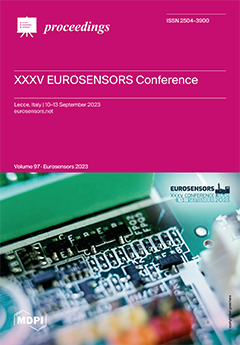Need Help?
Proceedings, 2024, Eurosensors 2023
Lecce, Italy | 10–13 September 2023
Volume Editors:
Pietro Siciliano, Consiglio Nazionale delle Ricerche, Italy
Bruno Andò, University of Catania, Italy
Luca Francioso, CNR-IMM, Institute for Microelectronics and Microsystems, Italy
- Issues are regarded as officially published after their release is announced to the table of contents alert mailing list.
- You may sign up for e-mail alerts to receive table of contents of newly released issues.
- PDF is the official format for papers published in both, html and pdf forms. To view the papers in pdf format, click on the "PDF Full-text" link, and use the free Adobe Reader to open them.
Cover Story (view full-size image):
The XXXV EUROSENSORS Conference will provide an opportunity for the presentation of updated results related to both theoretical and applied research of the sensor’s community. The conference
[...] Read more.
The XXXV EUROSENSORS Conference will provide an opportunity for the presentation of updated results related to both theoretical and applied research of the sensor’s community. The conference combines worldwide researchers and companies exhibiting results related to both theoretical and applied research in the field of sensors and actuators, as well as related materials and fabrication technologies.
Previous Issue
Next Issue
Issue View Metrics
Multiple requests from the same IP address are counted as one view.



